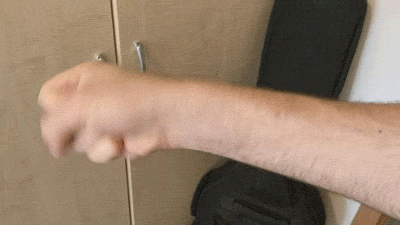guitar speed – what’s the secret?
if you lack the fundamentals, no amount of practicing will help you. Here’s why.
Ever since I began to work in the field of health and movement rehabilitation, I’ve found myself searching for deeper, more fundamental answers in every topic I’ve come across.
‘Too-good-to-be-true’ tricks and techniques are usually superficial, and have limited effect – in unusual cases, they can fail instantly. And ‘unusual cases’ are not that unusual when it comes to people and their bodies…
As I began to interweave my studies in health and movement with playing the guitar, I gained some insights about speed. One of my biggest difficulties was (and still is) playing fast on the guitar, as I had reached a plateau despite practicing diligently.
So, today’s topic is guitar speed. A common way of improving playing speed is to simply grab the guitar, choose a scale or pattern, set the metronome to a comfortable tempo, and then increase it by a few bpm at a time. There might be some variations, but usually, that’s it. This method is not bad, but its usability is limited, as it either works (for a while) or it doesn’t.

Despite its simplicity, the above method has literally thousands of variations on the internet. And that gives the impression that it’s the best way, the only way – you just have to find the perfect exercise. Of course, there are also countless tricks that promise to make your middle name Yngwie just by holding the pick a certain way… or something like that.
But what’s behind these superficial guitar speed tips and tricks?
Playing fast on the guitar is a very intricate skill when it’s viewed from a basic, physiological viewpoint. To be able to play fast, one needs…
- perfect synchronization of both hands
- muscles and nerves in good condition (see my other post on this topic: Become a better musician by keeping your muscles happy)
- excellent fine-motor skills (the ability to execute small, precise movements accurately – basically, good coordination)
- a clear mental state
- to manage any arising tensions in the body
…and so on.
What I want to convey:
It’s not about what you do. It’s about HOW you do it.
If the fundamental skills and abilities above are in place, any exercise will work and you will reach your goals. If you lack the fundamentals, these exercises will probably not work, or not work as well as they could.
This is my experience both in playing guitar and within the health industry – where treatment of the symptoms rather than the fundamentals is also an evergreen fashion.
Tension in the body
Allow me to highlight one item from the list above, namely the concept of managing tensions in the body. In most cases, I believe that this is the biggest obstacle on the road to greater guitar speed.
During quick movements, the natural reaction from the surrounding muscles is to tighten up, to ‘control the situation’. It’s also natural that learning new skills and movements comes with lots of unnecessary tension. Getting rid of this unnecessary tension should be the next step in the learning process.
like the facebook page
But that step may never come. Why? Because it’s very easy to skip ahead and play faster than we should and to learn new stuff all the time…
To demonstrate how tension kills the ability to play fast on the guitar, let’s do a quick experiment!
1. Rotate your palm up and down as fast as you can with a loose hand. This is the same movement used in one type of vibrato, and also in bending.
2. Pay attention to how fast and easy this is.
3. Now, clench your fist really hard, and do the same as before.
4. Notice the difference! Since your whole forearm and hand is one giant mess of tension, it’s impossible to move quickly and easily.

Loose

Clenched
It is also important to note that although we aren’t actively contracting the specific muscles we use for the rotational movement, making a fist has a tremendous effect on speed. This is mostly because muscle tension radiates to the surrounding areas.
Therefore, monitoring and eliminating unnecessary, excess tension – anywhere in the body – is KEY if you want to increase your guitar speed (and any other aspect of your playing).
This brings us to a well-known quote:
“Perfection is achieved, not when there is nothing more to add, but when there is nothing left to take away.”
– Antoine de Saint-Exupéry
This is the mindset that we should adopt when dealing with these matters. Be mindful of what happens in your body while you play guitar, and minimize tension, and you will get the reward.
One last tip: watch your breathing! The diaphragm influences stress and tension levels in the whole body.
Become a better musician by having a stronger, healthier body that can do more, without injuries and nagging pains:
Ready for the Intro Class?
Sign up to enroll in the 8-part Intro Class for free!
No spam, only useful info. You can always use the unsubscribe link included in the emails.
